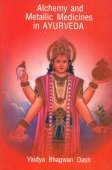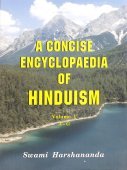Shalya, Śalya, Salya: 35 definitions
Introduction:
Shalya means something in Buddhism, Pali, Hinduism, Sanskrit, Jainism, Prakrit, Marathi, Hindi, biology. If you want to know the exact meaning, history, etymology or English translation of this term then check out the descriptions on this page. Add your comment or reference to a book if you want to contribute to this summary article.
The Sanskrit term Śalya can be transliterated into English as Salya or Shalya, using the IAST transliteration scheme (?).
In Hinduism
Vaishnavism (Vaishava dharma)
Source: ISKCON Press: GlossaryŚalya (शल्य).—The King of Madras. His sister was Mādrī who was married to Pāṇḍu. He wanted to join the side of the Pāṇḍavas during the Kurukṣetra war, but was tricked by Duryodhana into offering him his services. He was killed by Yudhiṣṭhira during the Kurukṣetra war.
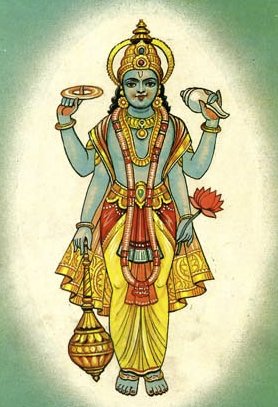
Vaishnava (वैष्णव, vaiṣṇava) or vaishnavism (vaiṣṇavism) represents a tradition of Hinduism worshipping Vishnu as the supreme Lord. Similar to the Shaktism and Shaivism traditions, Vaishnavism also developed as an individual movement, famous for its exposition of the dashavatara (‘ten avatars of Vishnu’).
Purana and Itihasa (epic history)
Source: archive.org: Puranic EncyclopediaŚalya (शल्य).—A king who gave advice and leadership to the Kauravas. He ruled over the Madra or Bālhīka kingdom. Mādrī, wife of Pāṇḍu was Śalya’s sister. Yet, in the great war he stood firmly on the Kaurava side and died at Kurukṣetra. The following role he played in the Bhārata story.
At the instance of Bhīṣma he gave his sister Mādrī in marriage to Pāṇḍu. (Ādi Parva, Chapter 112). (See full article at Story of Śalya from the Puranic encyclopaedia by Vettam Mani)
Source: archive.org: Shiva Purana - English TranslationŚalya (शल्य) refers to a “spear-head”, according to the Śivapurāṇa 2.5.8 (“The detailed description of the chariot etc.”).—Accordingly, as Sanatkumāra narrated to Vyāsa: “The divine chariot of lord Śiva consisting of all the worlds was built by Viśvakarman with devoted effort. [...] Goddess Sarasvatī in the form of the Vedas constituted the bells of the bow. The brilliant Viṣṇu became the arrow and Agni the spear-head (śalya) [iṣurviṣṇurmahātejāstvagniśśalyaṃ]. O sage, the four Vedas are said to be his horses. The remaining planets became their embellishments. His army came up from water. The winds were his feathers, wings etc. Vyāsa and other sages were the drivers of the vehicle. [...]”
Source: Cologne Digital Sanskrit Dictionaries: The Purana Index1a) Śalya (शल्य).—Appointed commander of the Kuru army after Karṇa's death, for half a day when Yudhiṣṭhira killed him. His army was defeated by Arjuna and Kṛṣṇa. Went to Syamantapañcaka for solar eclipse.*
- * Bhāgavata-purāṇa I. 15. 15; X. 78. [95 (V) 38]: 82. 25.
1b) A son of Vipracitti.*
- * Viṣṇu-purāṇa I. 21. 11.
1c) A son of Somadatta.*
- * Viṣṇu-purāṇa IV. 20. 32.
Śalya (शल्य) is a name mentioned in the Mahābhārata (cf. I.61.6) and represents one of the many proper names used for people and places. Note: The Mahābhārata (mentioning Śalya) is a Sanskrit epic poem consisting of 100,000 ślokas (metrical verses) and is over 2000 years old.

The Purana (पुराण, purāṇas) refers to Sanskrit literature preserving ancient India’s vast cultural history, including historical legends, religious ceremonies, various arts and sciences. The eighteen mahapuranas total over 400,000 shlokas (metrical couplets) and date to at least several centuries BCE.
Ayurveda (science of life)
Veterinary Medicine (The study and treatment of Animals)
Source: Shodhganga: Portrayal of Animal Kingdom (Tiryaks) in Epics An Analytical studyŚalya (शल्य) refers to the Indian Porcupine (wild) (Himalayan Porcupire), according to scientific texts such as the Mṛgapakṣiśāstra (Mriga-pakshi-shastra) or “the ancient Indian science of animals and birds” by Hamsadeva, containing the varieties and descriptions of the animals and birds seen in the Sanskrit Epics such as the Ramayana and Mahabharata.
Unclassified Ayurveda definitions
Source: Wisdom Library: Āyurveda and botanyŚalya (शल्य) refers to a type of fish (matsya) according to the Dhanvantari-nighaṇṭu 165.383-85. In the science of Āyurveda (ancient Indian healthcare), the meat of a fish is used and prepared in balanced diets. The Dhanvantarinighaṇṭu is a 10th-century medicinal thesaurus (nighaṇṭu) containing characteristics and synonyms of various herbal plants and minerals.

Āyurveda (आयुर्वेद, ayurveda) is a branch of Indian science dealing with medicine, herbalism, taxology, anatomy, surgery, alchemy and related topics. Traditional practice of Āyurveda in ancient India dates back to at least the first millenium BC. Literature is commonly written in Sanskrit using various poetic metres.
Shaivism (Shaiva philosophy)
Source: Brill: Śaivism and the Tantric TraditionsŚalya (शल्य) refers to the “shaft” (of a gourd), according to the Kiraṇatantra chapter 49 (dealing with vratacaryā).—Accordingly, “Garuḍa spoke: ‘You have taught me, O great Lord, the activities of the Neophyte, the Putraka and the Ācārya. Tell me those of the Sādhaka’. The Lord spoke: ‘[...] Accompanied by his ritual assistant, he should go to the forest and begin the practice of his religious observance. [If he is] without a ritual assistant, then his spouted water-pot is his ritual assistant in that [practice]. Alternatively, [instead of a kamaṇḍalu], it may be a gourd with a shaft (sa-śalya). Having made this [ready], he should practise his observance. [...]’”.

Shaiva (शैव, śaiva) or Shaivism (śaivism) represents a tradition of Hinduism worshiping Shiva as the supreme being. Closely related to Shaktism, Shaiva literature includes a range of scriptures, including Tantras, while the root of this tradition may be traced back to the ancient Vedas.
Kavya (poetry)
Source: Brill: Śaivism and the Tantric Traditions (kavya)Śalya (शल्य) refers to a “dart”, according to Kālidāsa’s Raghuvaṃśa verse 8.88-90.—Accordingly: “The wise say that death is the natural state of embodied creatures and life is a change in that state. If a being remains breathing even for a moment it is surely fortunate. The foolish man regards the loss of his dear one as a dart (śalya) shot into his heart. Another man looks on the same as a dart that has been pulled out, for it is a door to beatitude. When we are taught that our own body and soul unite and then separate, tell me which wise person should be tormented by separation from the external objects of the senses?”.
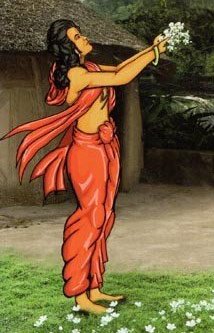
Kavya (काव्य, kavya) refers to Sanskrit poetry, a popular ancient Indian tradition of literature. There have been many Sanskrit poets over the ages, hailing from ancient India and beyond. This topic includes mahakavya, or ‘epic poetry’ and natya, or ‘dramatic poetry’.
Vastushastra (architecture)
Source: Brill: Śaivism and the Tantric Traditions (architecture)Śalya (शल्य) refers to the “extraneous substances” (which exist beneath the site), according to the Devyāmata (in the section śalyoddhāra-paṭala or “excavation of extraneous substances”).—Accordingly, “Next, I shall, as told before, teach the characteristics of extraneous substances (śalya-lakṣaṇa), which exist beneath the site and cause calamities to people. When the site, which has been made square, is being divided with cords, [the officiant] who has knowledge of divisions of the site should investigate extraneous substances by omens, etc. [...]”.
Source: Shodhganga: Elements of Art and Architecture in the Trtiyakhanda of the Visnudharmottarapurana (vastu)Śalya (शल्य) refers to one of the hundred types of Temples (in ancient Indian architecture), according to the Viṣṇudharmottarapurāṇa, an ancient Sanskrit text which (being encyclopedic in nature) deals with a variety of cultural topics such as arts, architecture, music, grammar and astronomy.—It is quite difficult to say about a definite number of varieties of Hindu temples but in the Viṣṇudharmottarapurāṇa hundred varieties of temples have been enumerated. For example, Śalya. These temples are classified according to the particular shape, amount of storeys and other common elements, such as the number of pavilions, doors and roofs.
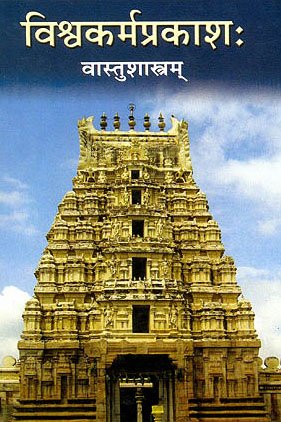
Vastushastra (वास्तुशास्त्र, vāstuśāstra) refers to the ancient Indian science (shastra) of architecture (vastu), dealing with topics such architecture, sculpture, town-building, fort building and various other constructions. Vastu also deals with the philosophy of the architectural relation with the cosmic universe.
Yoga (school of philosophy)
Source: ORA: Amanaska (king of all yogas): A Critical Edition and Annotated Translation by Jason BirchŚalya (शल्य) refers to the “thorn (that is the mind)”, according to the Amanaska Yoga treatise dealing with meditation, absorption, yogic powers and liberation.—Accordingly, as Īśvara says to Vāmadeva: “[...] When the thorn that is the mind (manaḥ-śalya) is dislodged by the natural, no-mind [state], the body becomes loose [and collapses] like a large umbrella without its pole. When the thorn of mental-faculties has been uprooted, roots and all, by means of the no-mind spade, the sage becomes happy. [...]”.

Yoga is originally considered a branch of Hindu philosophy (astika), but both ancient and modern Yoga combine the physical, mental and spiritual. Yoga teaches various physical techniques also known as āsanas (postures), used for various purposes (eg., meditation, contemplation, relaxation).
General definition (in Hinduism)
Source: Apam Napat: Indian MythologySalya was the brother of Madri, the mother of the Pandavas Nakula and Sahadeva. He was the king of the Madra kingdom.
He was very fond of his nephews, the Pandavas. When the call to arms for the great battle was sounded, he travelled with his retinue to join them, but was tricked into joining the army of the Kauravas instead. He was one of the greatest warriors of his age, and acquited himself nobly. Skilled in horse-lore, he was also charioteer to Karna for a while in the battle, till Karna's death.
Source: WikiPedia: HinduismShalya (शल्य): Ruler of Madradesa and brother of Madri and uncle of the Pandavas who because of having received hospitality from Duryodhana went over to his side.
In Buddhism
Mahayana (major branch of Buddhism)
Source: Wisdom Library: Maha Prajnaparamita SastraŚalya (शल्य, “arrow”) refers to one of the eight kinds of contemplations (anupaśyanā) among the Buddha’s disciples, according to the 2nd century Mahāprajñāpāramitāśāstra (chapter XVI). Accordingly, “for them, everything is impermanent (anitya), suffering (duḥkha), empty (śūnya), egoless (anātmaka), like a sickness (roga), an ulcer (gaṇḍa), like an arrow (śalya) stuck in one’s body, like an agony (agha)”.

Mahayana (महायान, mahāyāna) is a major branch of Buddhism focusing on the path of a Bodhisattva (spiritual aspirants/ enlightened beings). Extant literature is vast and primarely composed in the Sanskrit language. There are many sūtras of which some of the earliest are the various Prajñāpāramitā sūtras.
Tibetan Buddhism (Vajrayana or tantric Buddhism)
Source: Brill: Śaivism and the Tantric Traditions (tantric Buddhism)Śalya (शल्य) refers to “extraneous things” (at a building construction site), according to the Bhūśalyasūtrapātananimittavidhi section of Jagaddarpaṇa’s Ācāryakriyāsamuccaya, a text within Tantric Buddhism dealing with construction manual for monasteries etc.—Accordingly, “[...] If [someone] touches [a particular part of] his body and [the site] is quickly dug to a depth up to that [particular part of the body] according to the rules, then there is the [extraneous thing corresponding to the omen]. [With regard to bodily sensations,] various omens of extraneous things (śalya) [beneath the site] are taught. In this [short section], however, [the explanation is] just abridged. [...]”.

Tibetan Buddhism includes schools such as Nyingma, Kadampa, Kagyu and Gelug. Their primary canon of literature is divided in two broad categories: The Kangyur, which consists of Buddha’s words, and the Tengyur, which includes commentaries from various sources. Esotericism and tantra techniques (vajrayāna) are collected indepently.
In Jainism
General definition (in Jainism)
Source: Google Books: Encyclopedia of Indian Philosophies volume X: Jain Philosophy (Part 1)Śalya (शल्य) is the generic name for three defects of character, viz., deceit, desire for worldly enjoyment in return for one’s pious performances, and wrong faith.
Source: archive.org: Jaina YogaŚalya (शल्य).—Closely associated with samyaktva (right faith) is the category of the three śalyas which the Digambara writers Pūjyapāda (Sarvārtha-siddhi v7.18) generally define before discussing the vratas. These are the harmful stimuli or ‘stings’ which distract the person who has attained to right belief.
- māyā (deceit),
- nidāna (hankering for wordly pleasures and fame),
- mithyātva (false belief).
And, unless he rids himself of these śalyas, he cannot properly observe the vratas. The Śvetāmbaras do not seem to employ theterm śalya in this sense but Abhayadeva, in his commentary on the Upāsaka-daśāḥ, quotes a verse in which the śalyas seem to be equated with the aticāras of samyaktva.
Source: archive.org: Een Kritische Studie Van Svayambhūdeva’s PaümacariuŚalya (शल्य) participated in the war between Rāma and Rāvaṇa, on the side of the latter, as mentioned in Svayambhūdeva’s Paumacariu (Padmacarita, Paumacariya or Rāmāyaṇapurāṇa) chapter 57ff. Svayambhū or Svayambhūdeva (8th or 9th century) was a Jain householder who probably lived in Karnataka. His work recounts the popular Rāma story as known from the older work Rāmāyaṇa (written by Vālmīki). Various chapters [mentioning Śalya] are dedicated to the humongous battle whose armies (known as akṣauhiṇīs) consisted of millions of soldiers, horses and elephants, etc.
Source: The University of Sydney: A study of the Twelve ReflectionsŚalya (शल्य) refers to “(that which is) tormenting (the mind)”, according to the 11th century Jñānārṇava, a treatise on Jain Yoga in roughly 2200 Sanskrit verses composed by Śubhacandra.—Accordingly, “Having driven away anything tormenting the mind (manas-śalya), you must practise equanimity towards living beings, reflect upon the state of non-attachment [and] resort to purification of the mind”.

Jainism is an Indian religion of Dharma whose doctrine revolves around harmlessness (ahimsa) towards every living being. The two major branches (Digambara and Svetambara) of Jainism stimulate self-control (or, shramana, ‘self-reliance’) and spiritual development through a path of peace for the soul to progess to the ultimate goal.
Biology (plants and animals)
Source: Google Books: CRC World Dictionary (Regional names)Shalya in India is the name of a plant defined with Aegle marmelos in various botanical sources. This page contains potential references in Ayurveda, modern medicine, and other folk traditions or local practices It has the synonym Feronia pellucida Roth (among others).
Example references for further research on medicinal uses or toxicity (see latin names for full list):
· Pl. Coast Corom. (1798)
· Taxon (1979)
· Species Plantarum (1753)
· Taxon (1981)
· Transactions of the Linnean Society of London (1800)
· Journal of Economic and Taxonomic Botany (2003)
If you are looking for specific details regarding Shalya, for example diet and recipes, health benefits, pregnancy safety, extract dosage, chemical composition, side effects, have a look at these references.

This sections includes definitions from the five kingdoms of living things: Animals, Plants, Fungi, Protists and Monera. It will include both the official binomial nomenclature (scientific names usually in Latin) as well as regional spellings and variants.
Languages of India and abroad
Marathi-English dictionary
Source: DDSA: The Molesworth Marathi and English Dictionaryśalya (शल्य).—n (S) A peg, a pin, a spike, a thorn, a stub or snag, any similar thing considered as a piercing body. Note. This is rather the proper or primitive than the common sense of the word. The following are the current senses and applications. 1 A splint, splinter, or fragment remaining in the flesh. 2 A dead fœtus remaining in the womb. 3 fig. An injury or insult rankling and festering; an occurrence or an act of which the remembrance is pungently painful; a troublesome or an afflictive occurrence; a plague, pest, bore: a thorn in all its figurative senses. 4 Any mischiefworking thing (as a corpse, a bone &c.) left below the ground on which a house is rising. This must be dug up, or the house will be haunted &c.
--- OR ---
sāḷyā (साळ्या).—a C Epithet of the sesamum which is raised in the dry weather. Generally in plural; as sāḷē tīḷa. Whilst gōḍē tīḷa designates the monsoon-crop of sesamum, sāḷē tīḷa indicates the dry weather crop.
Source: DDSA: The Aryabhusan school dictionary, Marathi-Englishśalya (शल्य).—n A peg. A thorn. A dead fætus remaining in the womb.
Marathi is an Indo-European language having over 70 million native speakers people in (predominantly) Maharashtra India. Marathi, like many other Indo-Aryan languages, evolved from early forms of Prakrit, which itself is a subset of Sanskrit, one of the most ancient languages of the world.
Sanskrit dictionary
Source: DDSA: The practical Sanskrit-English dictionaryŚalya (शल्य).—[śal-yat]
1) A spear, javelin, dart.
2) An arrow, a shaft; शल्यं निखातमुदहारयतामुरस्तः (śalyaṃ nikhātamudahārayatāmurastaḥ) R.9.78; शल्यप्रोतम् (śalyaprotam) 9.75; अवगच्छति मूढचेतनः प्रयनाशं हृदि शल्यमर्पितम् (avagacchati mūḍhacetanaḥ prayanāśaṃ hṛdi śalyamarpitam) R.8.88; Ś.6.8; V.2.1.
3) A thorn, splinter.
4) A pin, peg, stake (said to be m. also in these four senses).
5) Any extraneous substance lodged in the body and giving it very great pain; आलातशल्यम् (ālātaśalyam) Uttararāmacarita 3. 35; अपनीताशेषशल्यः (apanītāśeṣaśalyaḥ) Dk.
6) (Fig.) Any cause of poignant or heart-rending grief; उद्धृतविषादशल्यः कथयिष्यामि (uddhṛtaviṣādaśalyaḥ kathayiṣyāmi) Ś.7.
7) A bone.
8) Difficulty, distress.
9) Sin, crime.
1) Poison.
11) Abuse, defamation.
12) Aegle Marmelos (bilva).
-lyaḥ 1 A porcupine, hedge-hog; Bhāg. 8.2.22.
2) The thorny shrub.
3) Extraction of splinters.
4) A fence, boundary.
5) The Bilva and Madana trees.
6) A kind of fish.
7) Name of a king of Madra and brother of Mādrī, the second wife of Pāṇḍu, and thus maternal uncle of Nakula and Sahadeva. (In the great war he at first intended to fight on the side of the Pāṇdavas, but he was artfully won over by Duryodhana and subsequently fought in his behalf. He acted as charioteer to Karṇa when he was generalissimo of the Kaurava forces, and after his death was appointed commander. He maintained the field for one day, but was at last slain by Yudhi- ṣṭhira).
-lyā A kind of dance (mentioned with lāsya and calita).
Derivable forms: śalyam (शल्यम्).
Source: Cologne Digital Sanskrit Dictionaries: Edgerton Buddhist Hybrid Sanskrit DictionaryŚalya (शल्य).—(m. or nt.; = Pali salla, see below), rope, as something that holds fast together; ship's cable, hawser: kṣānti-soratya-(= sau°) -smṛti-śalya-baddhā(ḥ) Kāśyapa Parivarta 153.5, (the ‘ship of the Doctrine’, dharmanāvā, line 2) that is moored (made fast) by the ropes of kṣānti, sauratya and smṛti; so Tibetan, bzod pa daṅ des pa daṅ dran pa ḥi sbyor kas (sbyor, connection, joining, fastening; instr.) legs par sbyar ba. Pali salla in a similar sense should be recognized in Therīg. 347 kāmā…sallabandhanā, desires which bind with cables (the usual meaning of salla, tho adopted in [Pali Text Society’s Pali-English Dictionary] and Mrs. Rhys Davids' translation(s), clearly makes no sense); commentary 242.7 rāgādīnaṃ sallānaṃ bandhanato sallabandhanā (tatp., not dvandva; and if rāgādi could be called arrows or spears, kṣānti etc. of Kāśyapa Parivarta could not!).
Source: Cologne Digital Sanskrit Dictionaries: Shabda-Sagara Sanskrit-English DictionaryŚalya (शल्य).—mn.
(-lyaḥ-lyaṃ) A dart, a jevelin. n.
(-lyaṃ) 1. A bamboo rod or stake. 2. Any stake or thorn. 3. An arrow. 4. An iron crow. 5. Sin, crime. 6. Difficulty, embarrassment, distress. 7. An arrow, a thorn, or other extraneous substance which has lodged in the body, a dart, (lit.); but (fig.) any tormenting and heartrending sorrow. 8. Abuse, defamation. 9. Poison. 10. A bone. m.
(-lyaḥ) 1. A thorny shrub, (Vangueria spinosa.) 2. A porcupine. 3. A hedgehog. 4. A peg, a pin, &c. 5. A boundary. 6. Extraction of splinters, (in surgery.) 7. A king, the maternal uncle of Yudhist'Hira. E. śal to go, aff. yat or ya Unadi aff.
Source: Cologne Digital Sanskrit Dictionaries: Benfey Sanskrit-English DictionaryŚalya (शल्य).—i. e. śala + ya, I. m. and n. 1. A dart, a javelin. 2. An arrow, [Uttara Rāmacarita, 2. ed. Calc., 1862.] 46, 14;
Śalya (शल्य).—[masculine] [neuter] the point of a spear or an arrow, i.[grammar] thorn, sting (lit. & [figuratively]); blemish, fault, obstacle; [masculine] also = seq.
Source: Cologne Digital Sanskrit Dictionaries: Monier-Williams Sanskrit-English Dictionary1) Śalya (शल्य):—[from śal] a mn. (ifc. f(ā). ) a dart, javelin, lance, spear, iron-headed weapon (cf. upa-ś), pike, arrow, shaft (also the point of an arrow or spear and its socket), [Ṛg-veda] etc. etc.
2) [v.s. ...] anything tormenting or causing pain (as a thorn, sting etc.), or (in med.) any extraneous substance lodged in the body and causing pain (e.g. a splinter, pin, stone in the bladder etc.; also applied to the fetus, and, as a branch of med°, to ‘the extraction of splinters or extraneous substances’), [Mahābhārata; Rāmāyaṇa] etc., [Suśruta]
3) [v.s. ...] a fault, defect, [Harivaṃśa] (cf. karma-ś)
4) [v.s. ...] m. a porcupine, [Bhāgavata-purāṇa]
5) [v.s. ...] a kind of fish, [cf. Lexicographers, esp. such as amarasiṃha, halāyudha, hemacandra, etc.]
6) [v.s. ...] a fence, boundary, [cf. Lexicographers, esp. such as amarasiṃha, halāyudha, hemacandra, etc.]
7) [v.s. ...] Vanguieria Spinosa, [cf. Lexicographers, esp. such as amarasiṃha, halāyudha, hemacandra, etc.]
8) [v.s. ...] Aegle Marmelos, [cf. Lexicographers, esp. such as amarasiṃha, halāyudha, hemacandra, etc.]
9) [v.s. ...] Name of an Asura, [Harivaṃśa; Viṣṇu-purāṇa]
10) [v.s. ...] of a king of Madra (maternal uncle of the sons of Pāṇḍu and [especially] of Nakula and Saha-deva, Madrī the wife of Pāṇḍu being sister to Śalya), [Mahābhārata; Harivaṃśa] etc.
11) [v.s. ...] of another king, [Rājataraṅgiṇī]
12) Śalyā (शल्या):—[from śalya > śal] f. a kind of dance (mentioned together with lāsya and calita), [Kāvyādarśa i, 39] ([varia lectio] sāmya)
13) Śalya (शल्य):—[from śal] n. an iron crow, [cf. Lexicographers, esp. such as amarasiṃha, halāyudha, hemacandra, etc.]
14) [v.s. ...] poison, [cf. Lexicographers, esp. such as amarasiṃha, halāyudha, hemacandra, etc.]
15) [v.s. ...] abuse, defamation, [cf. Lexicographers, esp. such as amarasiṃha, halāyudha, hemacandra, etc.],
16) b etc. See [column]1.
17) Salya (सल्य):—salyaka See vi-s.
Source: Cologne Digital Sanskrit Dictionaries: Yates Sanskrit-English DictionaryŚalya (शल्य):—[(lyaḥ-lyaṃ)] 1. m. A thorny shrub; a porcupine; a boundary; peg or pin; name of a king. n. Bambu rod; stake; thorn; arrow; iron crow; abuse; sin; distress; poison. m. n. Dart, javelin.
Source: DDSA: Paia-sadda-mahannavo; a comprehensive Prakrit Hindi dictionary (S)Śalya (शल्य) in the Sanskrit language is related to the Prakrit words: Salla, Sallā.
[Sanskrit to German]
Sanskrit, also spelled संस्कृतम् (saṃskṛtam), is an ancient language of India commonly seen as the grandmother of the Indo-European language family (even English!). Closely allied with Prakrit and Pali, Sanskrit is more exhaustive in both grammar and terms and has the most extensive collection of literature in the world, greatly surpassing its sister-languages Greek and Latin.
Hindi dictionary
Source: DDSA: A practical Hindi-English dictionaryŚalya (शल्य) [Also spelled shaly]:—(nm) a surgical instrument; a thorn; ~[karma/kriyā] surgery, a surgical operation; -[cikitsaka] a surgeon; -[cikitsā] surgical operation; surgery; -[vidyā/śāstra] surgery.
...
Kannada-English dictionary
Source: Alar: Kannada-English corpusŚalya (ಶಲ್ಯ):—[noun] a loose, ablong cloth to cover the upper portion of the body or worn loosely above the upper garment.
--- OR ---
Śalya (ಶಲ್ಯ):—
1) [noun] a long, stabbing weapon for thrusting or throwing, consisting of a shaft with a sharp-pointed head; a spear.
2) [noun] anything that has a pointed end (as a blade of grass, needle, thorn, etc.).
3) [noun] any of the parts of the skeleton of a vertebrate animal; a bone.
4) [noun] a porcupine.
5) [noun] an enclosure as a fence, cmpound, etc.
6) [noun] anything tormenting or causing pain.
7) [noun] the small-sized tree Xeromphis spinosa ( = Gardenia floribunda, Randia dumetorum) of Rubiaceae family.
8) [noun] a kind of hell.
9) [noun] a moral or religious transgression; a sin.
10) [noun] a substance with an inherent property that tends to destroy life or impair health; poison.
11) [noun] insulting or coarse language; abuse.
12) [noun] the tree Aegle marmelos of Rutaceae family; stone apple tree.
13) [noun] water.
14) [noun] a thin, emaciated body.
15) [noun] a piece, fragment.
16) [noun] infatuating attachment, affection.
17) [noun] (fig.) a painful, agonising condition.
18) [noun] a man who causes pain or suffering to; an inflictor; a tormentor.
19) [noun] name of the maternal uncle of Paṇḍavas and the king of Madra country.
Kannada is a Dravidian language (as opposed to the Indo-European language family) mainly spoken in the southwestern region of India.
Nepali dictionary
Source: unoes: Nepali-English DictionaryŚalya (शल्य):—n. 1. surgical instruments (like knife, scissors, etc.); 2. splinter; thorn; 3. bone; 4. any cause of poignant grief;
Nepali is the primary language of the Nepalese people counting almost 20 million native speakers. The country of Nepal is situated in the Himalaya mountain range to the north of India.
See also (Relevant definitions)
Starts with (+38): Shalya-chikitsa, Shalya-cikitsa, Shalya-cikitsaka, Shalya-traya, Shalya-vijnana, Shalyabhuta, Shalyacikitse, Shalyada, Shalyadhikara, Shalyadi, Shalyadivarga, Shalyaharana, Shalyaharanavidhi, Shalyaharani, Shalyahartar, Shalyahartri, Shalyahatya, Shalyahrit, Shalyajnana, Shalyaka.
Ends with (+49): Adhahshalya, Adhvashalya, Antahkaranashalya, Antahshalya, Antarshalya, Antashalya, Antoshalya, Apishalya, Arthashalya, Ashalya, Asthishalya, Atmashalya, Bahishalya, Bahushalya, Bishalya, Brahmashalya, Cakrashalya, Carmashalya, Chakrashalya, Drishtivaishalya.
Full-text (+622): Shalyari, Salla, Shalyatantra, Adhvashalya, Shalyashastra, Shalyoddhara, Shalyakriya, Vishalya, Jihmashalya, Shalyahartri, Brahmashalya, Upashalya, Atmashalya, Shalya-chikitsa, Vishalyasamgama, Nihshalyam, Shalpa, Jingashalya, Jihvashalya, Shalyam.
Relevant text
Search found 62 books and stories containing Shalya, Śalya, Salya, Sāḷyā, Sālyā, Śalyā; (plurals include: Shalyas, Śalyas, Salyas, Sāḷyās, Sālyās, Śalyās). You can also click to the full overview containing English textual excerpts. Below are direct links for the most relevant articles:
Mahabharata (English) (by Kisari Mohan Ganguli)
Sushruta Samhita, volume 1: Sutrasthana (by Kaviraj Kunja Lal Bhishagratna)
Chapter XXVII - Removal of foreign bodies
Chapter VII - Surgical appliances
Tattvartha Sutra (with commentary) (by Vijay K. Jain)
Verse 7.18 - The votary is free from stings (śalya) < [Chapter 7 - The Five Vows]
Verse 7.23 - The five transgressions of the right-believer (samyagdṛṣṭi) < [Chapter 7 - The Five Vows]
Charaka Samhita and Sushruta Samhita (by Nayana Sharma)
Puranic encyclopaedia (by Vettam Mani)
Bhakti-rasamrta-sindhu (by Śrīla Rūpa Gosvāmī)
Verse 2.4.109 < [Part 4 - Transient Ecstatic Disturbances (vyābhicāri-bhāva)]
Verse 1.2.112 < [Part 2 - Devotional Service in Practice (sādhana-bhakti)]
Related products
